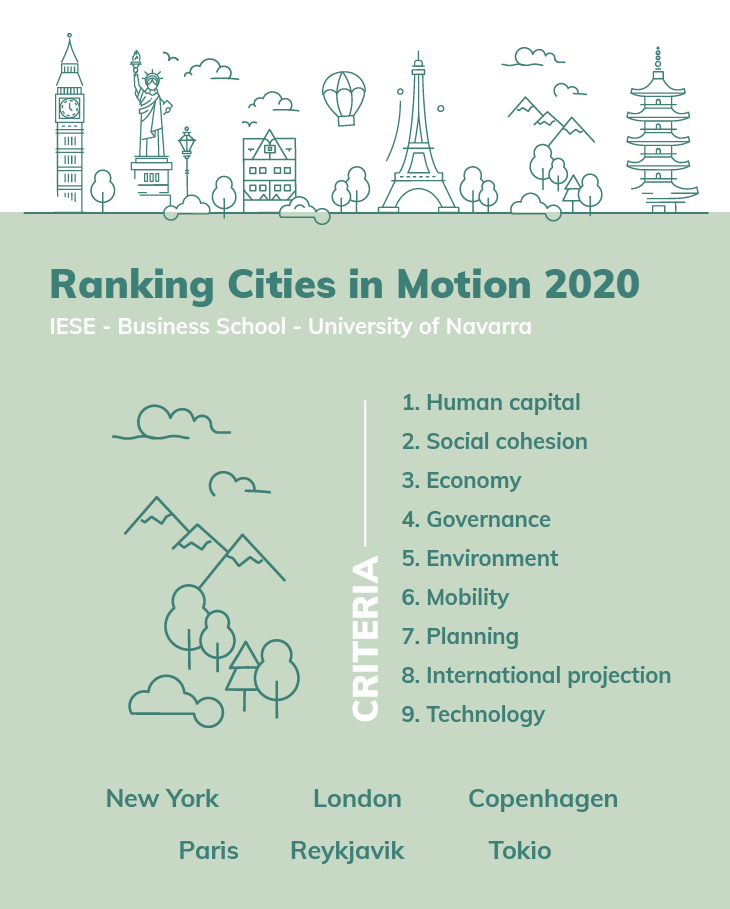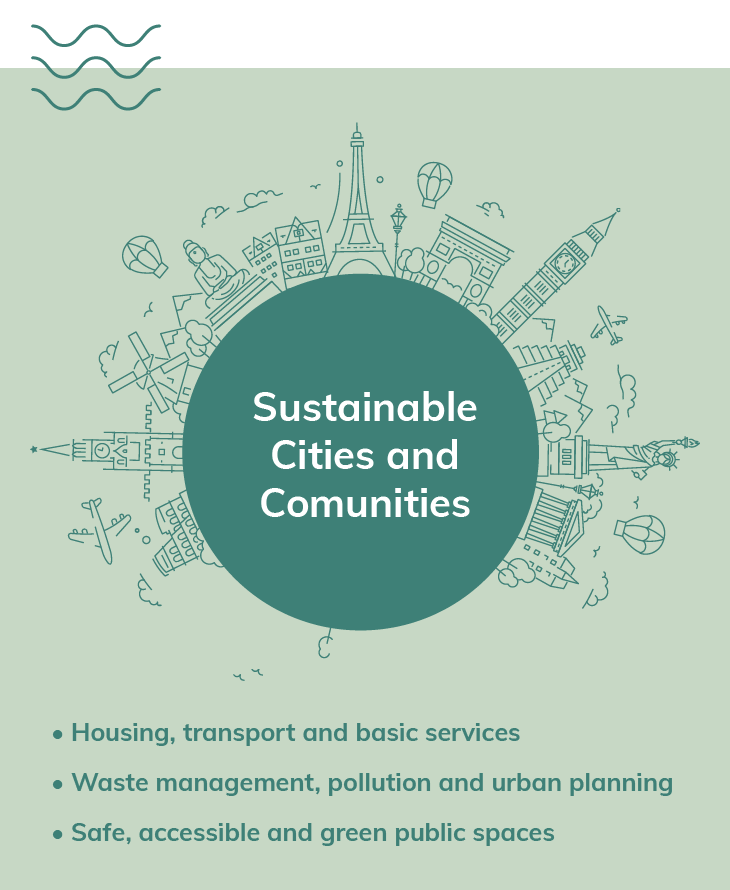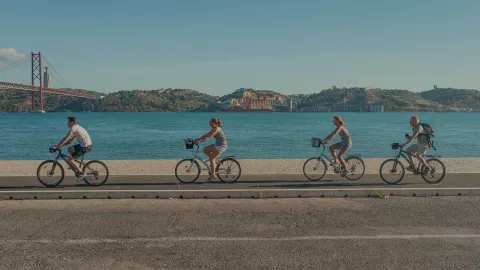A greener urban life
The world population continues to grow, especially in the cities, which represent only 3% of the continents' area. It is necessary to make cities greener and more sustainable, to ensure quality of life for people and the planet. In 2030, there will be 5 billion people living in cities, around 60% of the total population.
Cities are growing more and more. Whether it's looking for a job, better education and health care prospects, or because war, poverty and climate change, people are moving more and more to urban centers. According to the UN, 3.5 billion people currently live in cities, about half of the world's population. That number is expected to grow to 5 billion in the next decade, representing 60% of the population, with a percentage of over 70% expected in 2050.
These numbers show the need for urgent rethinking of cities in order to accommodate this population growth and its consequences. But there are other data that are even more worrying, such as the fact that more than 800 million people currently live in slums or degraded neighborhoods, mainly in Asia. And despite the fact that, according to the UN, cities occupy only 3% of the area of the continents, they consume between 60% and 80% of all energy and emit 70% of greenhouse gases. On the other hand, cities are also more vulnerable to the effect of climate change and rising water levels.
Goal: safety, inclusion, resilience and sustainability
It is with the improvement of the living conditions of the urban population in mind, and the effect this can have on the planet in general, that the UN dedicates one of the Sustainable Development Goals (SDG 11) to Sustainable Cities and Communities. The need to reinforce sustainability in the urban environment is transversal to several aspects that, as a whole, bring benefits to people, to the economy and to the environment, both in terms of the local ecosystem and the planet itself.

Mobility and energy efficiency
Regarding the right to adequate housing, which takes into consideration the needs of a person or family, different levels of intervention in different parts of the world are required. In urban areas of Asia, Africa and Latin America there are millions of people living in unsanitary and unsafe conditions - 24% of the total urban population, in 2018, according to the UN. In more developed countries, in addition to having densely populated areas, there are concerns regarding energy efficiency and the cost of keeping a house warm in winter and cool in summer.
The Covid-19 pandemic has exposed the problems of population concentration: it is in urban areas, particularly in the most disadvantaged neighborhoods, that the virus causes the most infections and serious health consequences. Along with this come the problems of excessive traffic, lack of parking, obstacles to the movement of pedestrians, with the consequences that this brings for the environment and for the quality of life in the cities.

Electric vehicles help to improve the environment and bicycles reduce traffic pressure
The solution is to tackle the difficulties together, acting at various levels, both in the center and in the periphery. The promotion of electric mobility and the creation of more charging stations help to attract drivers and reduce pollution. Besides, the construction of cycle lanes and the use of the bicycle as a means of transport, take cars off the roads. For instance, Lisbon, which was the European Green Capital in 2020, intends to have 200 km of these routes until the end of 2021. Before that, in September of the same year, it will host the international conference Velo-City, the world's largest event on the subject.
At the same time, the investment in public transport and the creation of peripheral parks in large cities, along with multimodal transport stations, help to improve traffic even further, and give more space - and quality of life - to pedestrians. In the future, mobility will increasingly be a service, the eternal 'family car', which is often parked far from home, will give way to bicycles, public transport and shared cars that are used only when necessary. In October, the UN organizes the second Global Sustainable Transport Conference in Beijing, focused on the challenges that need to be tackled in this area in order to meet the SDGs up to 2030, as well as the goals of the Paris Agreement.
Less pollution and less waste
One of the immediate effects of the mobility transformations in cities can be seen in the improvement of noise and air pollution. And this is another critical point for the UN. According to the World Health Organization, air pollution kills about 4.2 million people every year, and 9 out of 10 people breathe air with some type of pollutant. A clean, green and well-planned city has direct health benefits.
As consumption centers, cities are responsible for tons of garbage on a daily basis. And, according to UN-Habitat, the UN program for sustainable cities, around 3 billion people live in areas that do not have waste management systems. Garbage can be a disease enhancer, in addition to polluting both soil and water, affecting not only the consumption of this scarce good, but also rivers and oceans.
Reversing the tendency involves recycling and better waste management, but before that there must be an investment in the promotion of a lifestyle with less use of plastics and other materials that only serve as packaging. Reducing and reusing, two of the 'Rs' of the Circular Economy are ways to combat waste as important or more important than the correct separation of waste in bins.
Cities and more developed countries are also increasingly investing in composting, so that people are able to transform organic waste into natural fertilizer, and fighting against single-use plastic packaging. In Portugal, according to the Government, between March 2020 and May 2021 15 million plastic bottles were placed in collection machines, in a pilot program that returns money in the form of a receipt. The next step will be a tax on plastic bottles from 2023, to further promote their placement in this type of machine, in order to meet the European target of 77% of bottle recycling up to 2025. It may seem like a difficult goal, but there is one country that has been doing much more than that for several years: in Norway, 97% of plastic bottles are recycled. Others are, like Portugal, halfway. This is the case of England, where, in London, a city where an adult purchases, on average, 175 plastic water bottles per year, several initiatives were developed to fight these single-use plastics, such as the creation of fountains throughout the city and a network of spaces where you can fill your water bottle.
Green cities, why not?
Urban areas, especially large cities, can never be compared to rural areas or areas with less construction. But green is more and more a goal, due to the benefits that both large parks and small gardens in buildings or small squares bring to the environment and to people's lives. It is increasingly common to find new species of wild animals in green areas, which can only be seen as an ecosystem improvement.
Planning a sustainable city involves guaranteeing green spaces for its inhabitants, which serve both as a lung for the entire urban area and as a place for sports, for children or just for walking outdoors. And the 'country' can even enter the city, through community gardens, a growing trend to encourage organic farming in urban areas. Community gardens promote sharing and end up reducing ''food miles'' and waste.

Community gardens promote organic farming in urban areas and help to reduce waste, as well as the distance that food travels from where it is grown to where it is consumed
Another initiative that is starting to emerge in some cities is to let spontaneous vegetation grow on the sidewalks. The goal is to allow bees to have access to more flowers, increasing the pollination of all types of plants. The measure requires control and care, due to the possible accumulation of garbage or debris, but the natural vegetation can quickly resemble a natural garden, due to the growth of different plants. Lisbon also invested in another strategy of the rural world: sheep. The Life Lungs project, co-funded by the European Union, operates in various green areas of the capital and includes a herd of 20 sheep that graze in Parque da Bela Vista, achieving a natural reduction of vegetation.
Sustainable technology
Human beings are constantly looking for ways to improve their quality of life through technology, and sustainability increasingly enters the equation, through the use sensors, monitoring and improvement of urban efficiency, in several domains. 'Smart cities' are more sustainable, and it is expected that the new mobile network, 5G, can take them to a new level.
The fifth-generation mobile communications system allows for a higher speed of communications and data, as well as the ability to connect more devices, not just smartphones or computers, but all types of equipment, such as cars, traffic lights, lighting, garbage cans or irrigation systems. In the future, all this sensors will make it possible to improve the efficiency of mobility and traffic, lighting, garbage collection or irrigation systems, resulting in less pollution and less waste of energy and water.
The most sustainable cities
There are several ways to calculate the ability of a city to be more sustainable, and several rankings that lead to different positions. However, with slight differences in scores, the world leadership in urban sustainability turns out to be in roughly the same cities, located in Europe, Asia and North America.

Sustainability is a goal that we should all aspire to, especially when it comes to large urban centers. The greatest challenges and obstacles in these densely populated areas, when overcome, also present the greatest benefits for the population, the environment, and the local and national economy. If forests are the lungs of the planet, cities are the heart of society.
